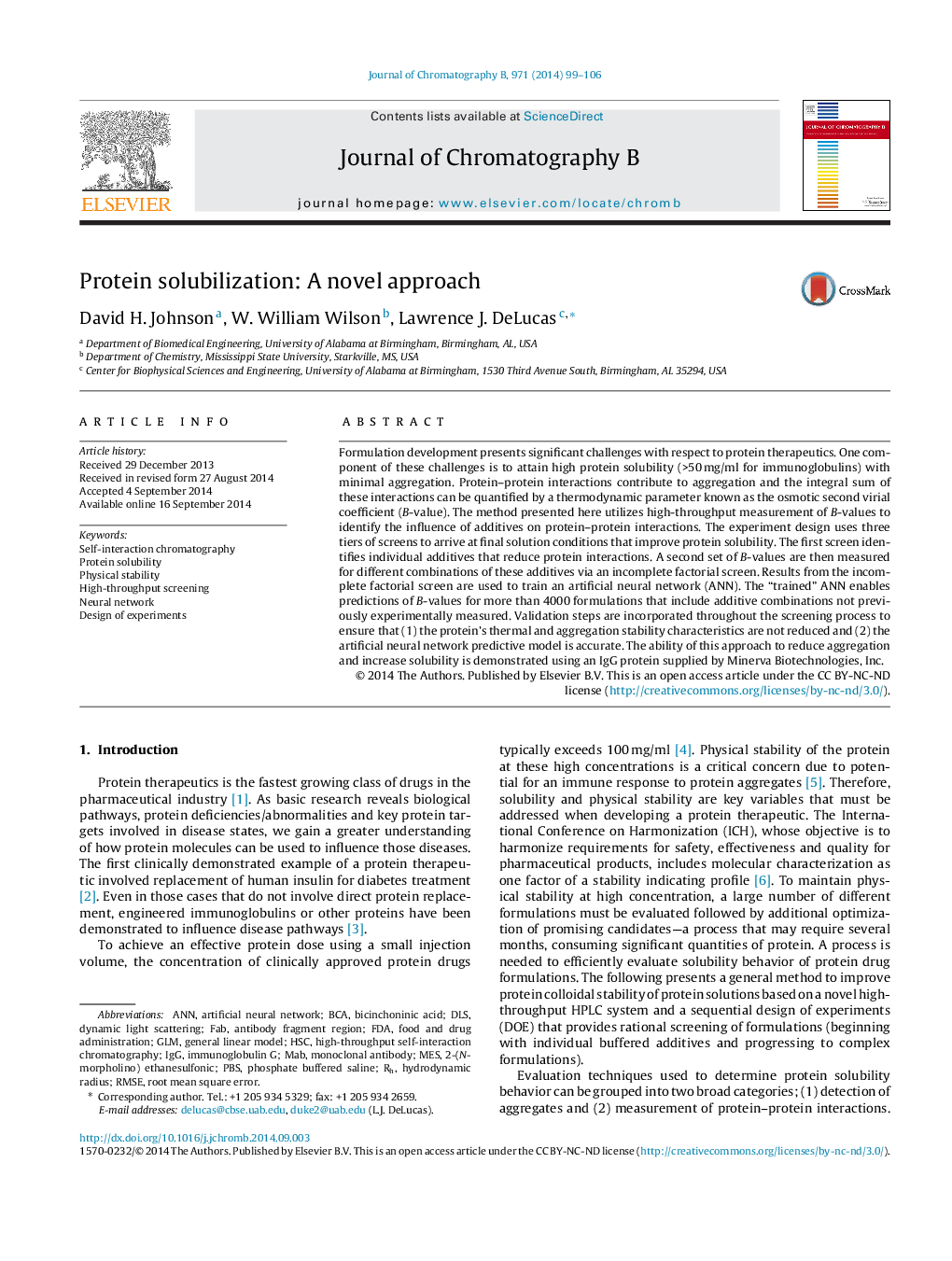| Article ID | Journal | Published Year | Pages | File Type |
|---|---|---|---|---|
| 7617584 | Journal of Chromatography B | 2014 | 8 Pages |
Abstract
Formulation development presents significant challenges with respect to protein therapeutics. One component of these challenges is to attain high protein solubility (>50Â mg/ml for immunoglobulins) with minimal aggregation. Protein-protein interactions contribute to aggregation and the integral sum of these interactions can be quantified by a thermodynamic parameter known as the osmotic second virial coefficient (B-value). The method presented here utilizes high-throughput measurement of B-values to identify the influence of additives on protein-protein interactions. The experiment design uses three tiers of screens to arrive at final solution conditions that improve protein solubility. The first screen identifies individual additives that reduce protein interactions. A second set of B-values are then measured for different combinations of these additives via an incomplete factorial screen. Results from the incomplete factorial screen are used to train an artificial neural network (ANN). The “trained” ANN enables predictions of B-values for more than 4000 formulations that include additive combinations not previously experimentally measured. Validation steps are incorporated throughout the screening process to ensure that (1) the protein's thermal and aggregation stability characteristics are not reduced and (2) the artificial neural network predictive model is accurate. The ability of this approach to reduce aggregation and increase solubility is demonstrated using an IgG protein supplied by Minerva Biotechnologies, Inc.
Keywords
DLSFDAHSCPBSBCAmAbIgGANNRMSEGLMMonoclonal antibodyimmunoglobulin Gbicinchoninic acidPhysical stabilityProtein solubilityRoot mean square errorFood and Drug AdministrationNeural networkArtificial Neural NetworkHydrodynamic radiusDesign of experimentshigh-throughput screeningFabPhosphate buffered salineGeneral linear modelMeSDynamic Light ScatteringSelf-interaction chromatography
Related Topics
Physical Sciences and Engineering
Chemistry
Analytical Chemistry
Authors
David H. Johnson, W. William Wilson, Lawrence J. DeLucas,
